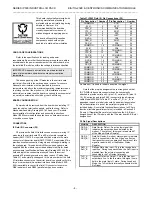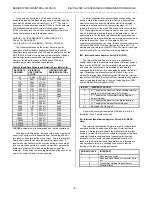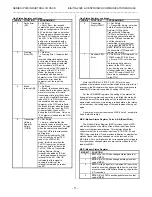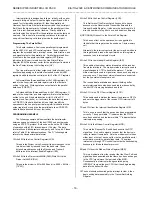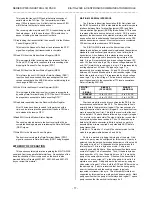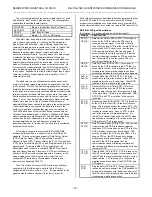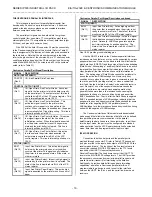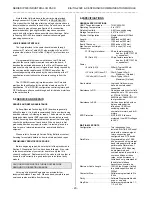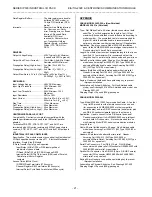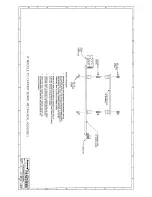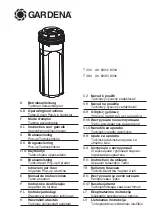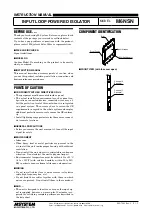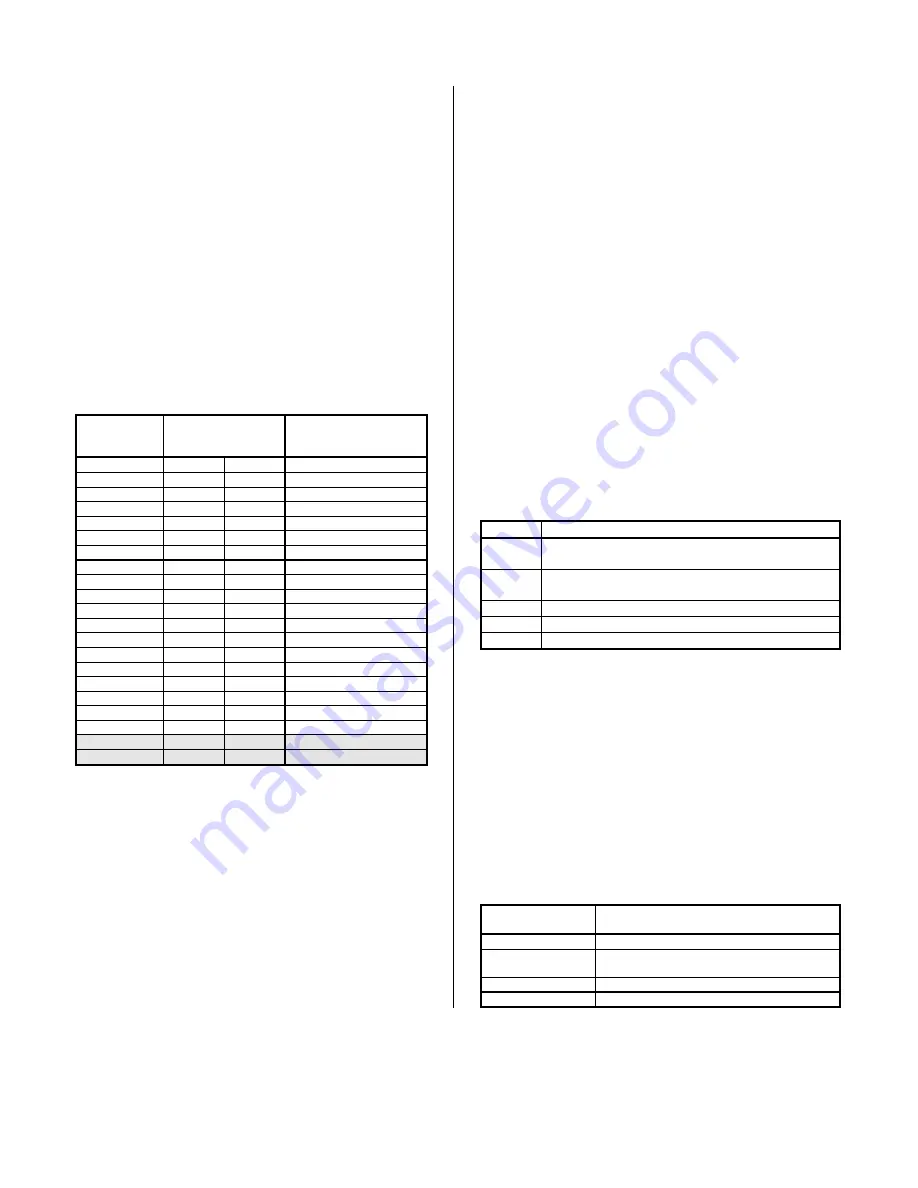
SERIES IP503 INDUSTRIAL I/O PACK EIA/TIA-232E & CENTRONICS COMMUNICATION MODULE
___________________________________________________________________________________________
- 8 -
Upon loading either latch, a 16-bit baud counter is
immediately loaded (this prevents long counts on initial load)The
clock may be divided by any divisor from 1 to 2
(16-1)
The output
frequency of the baud rate generator (RCLK) is 16x the data rate.
The relationship between the output of the baud generator
(RCLK), the baud rate, the divisor, and the 8MHz system clock
can be summarized in the following equations:
DIVISOR = CLOCK FREQUENCY
÷
[BAUD RATE x 16];
RCLK= 16 x BAUD RATE;
= 16 x [CLOCK
÷
(16 x DIVISOR)] = CLOCK
÷
DIVISOR
The following table shows the correct divisor to use for
generation of some standard baud rates (based on the 8MHz
clock)Note that baud rates up to 512K may be configured, but the
EIA/TIA-232E drivers of this module limit data rates to 128Kbps
maximum for performance within rated load specifications.
However, limited performance at 256Kbps and 512Kbs is
possible, but not recommended or guaranteed
Table 32:Baud Rate Divisors and Relative Error (8MHz Clk)
BAUD RATE
DESIRED
DIVISOR (N)
USED FOR 16x
CLOCK
% ERROR DIFF BET
DESIRED & ACTUAL
50
10000
2710H
0
75
6667
1A06H
0005
110
4545
11C1H
0010
1345
3717
0E85H
0013
150
3333
0D05H
0010
300
1667
0683H
0020
600
833
0341H
0040
1200
417
01A1H
0080
1800
277
0115H
0080
2000
250
00FAH
0
2400
208
00D0H
0160
3600
139
0086H
0080
4800
104
0068H
0160
7200
69
0045H
0644
9600
52
0034H
0160
19200
26
001AH
0160
38400
13
000DH
0160
56000
9
0009H
0790
128000
4
0004H
2344
256000
2
0002H
2344
512000
1
0001H
2400
SHADED entries are not recommended due to driver limitations
With respect to this device, the baud rate may be considered
equal to the number of bits transmitted per second (bps)The bit
rate (bps), or baud rate, defines the bit time. This is the length of
time a bit will be held on before the next bit is transmitted. A
receiver and transmitter must be communicating at the same bit
rate, or data will be garbled. A receiver is alerted to an incoming
character by the start bit, which marks the beginning of the
character. It then times the incoming signal, sampling each bit as
near to the center of the bit time as possible
To better understand the asynchronous timing used by this
device, note that the receive data line (RxD) is monitored for a
high-to-low transition (start bit)When the start bit is detected, a
counter is reset and counts the 16x sampling clock to 7-1/2
(which is the center of the start bit)The receiver then counts from
0 to 15 to sample the next bit near its center, and so on, until a
stop bit is detected, signaling the end of the data stream. Use of
a sampling rate 16x the baud rate reduces the synchronization
error that builds up in estimating the center of each successive bit
following the start bit. As such, if the data on RxD is a
symmetrical square wave, the center of each successive data cell
will occur within
±
3125% of the actual center (this is 50%
÷
16,
providing an error margin of 46875%)Thus, the start bit can begin
as much as one 16x clock cycle prior to being detected
IER - Interrupt Enable Register, Ports A & B (R/W)
The Interrupt Enable Register is used to independently
enable/ disable the four possible serial channel interrupt sources
that drive the INTREQ0* line (Serial ports A & Band the parallel
port share this line)Interrupts are disabled by resetting the
corresponding IER bit low (0), and enabled by setting the IER bit
high (1)Disabling the interrupt system (IER bits 0-3 low) also
inhibits the Interrupt Identification Register (IIR) and the interrupt
request line (INTREQ0*)All other functions operate in their normal
manner, including the setting of the Line Status Register (LSR)
and the Modem Status Register (MSR)
IER BIT
INTERRUPT ACTION
0
A “1” enables the Received Data Available Interrupt
and the Time-Out Interrupts (FIFO Mode)
1
A “1” enables the Transmitter Holding Register
Empty Interrupt
2
A “1” enables the Receiver Line Status Interrupt
3
A “1” enables the Modem Status Interrupt
4-7
Not Used - Set to Logic 0
A power-up or system reset sets all IER bits to 0 (bits 0-3
forced low, bits 4-7 permanently low)
IIR - Interrupt Identification Register, Ports A & B (READ
Only)
The Interrupt Identification Register is used to indicate that a
prioritized interrupt is pending and the type of interrupt that is
pending. This register will indicate the highest-priority interrupt
pending. In order to minimize the software overhead during data
character transfers, individual serial channels prioritize their
interrupts into four levels (indicated below)Additionally, with
respect to the 2 serial ports and the parallel port, interrupts are
also served according to a shifting priority scheme that is a
function of the last interrupting port served
PRIORITY/LEVE
L
INTERRUPT
1
Receiver Line Status
2
Received Data Ready or Character Time-
out
3
Transmitter Holding Register Empty
4
Modem Status




